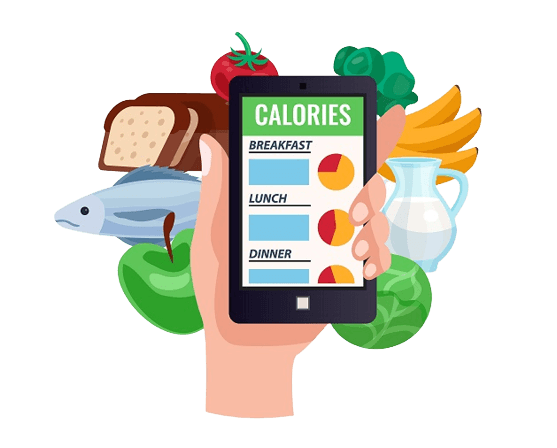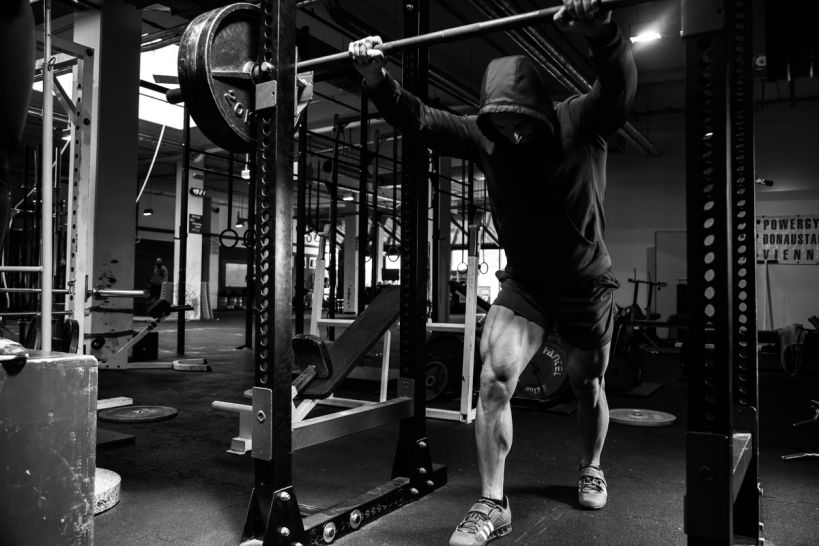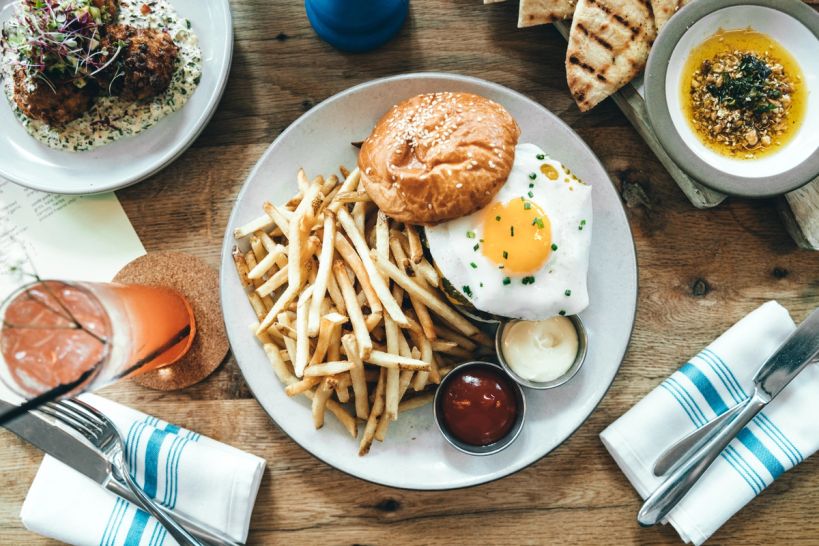Best Diet For 6 Pack Abs
Introduction to Achieving 6 Pack Abs
Having a set of well-defined, chiseled abs has long been considered the epitome of a fit and attractive physique. While it may seem like an elusive goal, achieving six-pack abs is certainly attainable with the right approach. It all begins with understanding the importance of diet in sculpting those abdominal muscles to perfection.
The Importance of Diet in Sculpting Abs
When it comes to achieving six-pack abs, it's crucial to understand that exercise alone won't magically reveal those coveted abdominal muscles. Your diet plays an equally important role, if not more so, in helping you shed excess body fat and showcase your hard-earned abs. You can spend hours doing crunches and planks, but without proper nutrition, your efforts will be in vain. The reason why diet is so vital for sculpting abs lies in the concept of body fat percentage. Body fat percentage refers to the proportion of fat mass compared to lean body mass (muscle, bones, organs). To have visible abdominal muscles, you need to reduce your overall body fat percentage. And this is where your diet becomes critical.
Understanding Body Fat Percentage and Its Role
For men aiming for six-pack abs, achieving a body fat percentage below 10-12% is typically necessary for visible definition. Women usually aim for levels below 16-19%. The reason why a low body fat percentage is necessary is that excess adipose tissue tends to cover and obscure the underlying muscle definition. Reducing body fat requires creating a caloric deficit - consuming fewer calories than you burn through physical activity and bodily functions. However, simply reducing calories without considering the quality of those calories can lead to muscle loss instead of targeted fat reduction. This is where the right combination of macronutrients and micronutrients comes into play. In the following sections, we will delve into the specifics of macronutrients (protein, carbohydrates, and fats) and micronutrients (vitamins and minerals) that can support your journey towards achieving those enviable six-pack abs. We will also explore caloric intake and portion control techniques to help you strike the right balance between shedding body fat while preserving lean muscle mass. So, buckle up and get ready to transform your diet for a sculpted midsection!
Macronutrients for 6 Pack Abs
Protein: The Building Block of Muscles
Subtitle: Fueling your body with the right amount of protein is key to achieving those coveted six-pack abs. When it comes to building and repairing muscles, protein plays a crucial role. It is the primary macronutrient responsible for muscle growth and development. To optimize your results, it's important to consume an optimal amount of protein daily. The general guideline for protein intake varies depending on factors such as age, weight, and activity level. However, a good starting point is consuming around 0.8 grams of protein per kilogram of body weight. For example, if you weigh 70 kilograms (154 pounds), aim for at least 56 grams of protein per day.
High-Quality Protein Sources for a Balanced Diet
Subtitle: Diversify your diet with these excellent sources of high-quality proteins. Not all proteins are created equal. While meeting your daily protein requirements is essential, choosing high-quality sources will provide additional benefits in terms of nutrient content and overall health. Include lean meats such as chicken breast or turkey in your diet as they are rich in essential amino acids needed for muscle repair. Fish like salmon or tuna not only provide ample amounts of protein but also contain omega-3 fatty acids that aid in reducing inflammation and promoting heart health. Vegetarian or vegan? No worries! Plant-based options like tofu, tempeh, lentils, quinoa, and edamame are excellent sources of complete proteins that can be easily incorporated into a balanced diet.
Carbohydrates: Fueling Your Workouts and Recovery
Subtitle: Carbs aren't the enemy – they're an important energy source for maximizing your workouts and enhancing recovery. Carbohydrates often get a bad reputation when it comes to achieving six-pack abs, but they are a vital part of your diet. Understanding the different types of carbs and their impact on your body can help you make wise choices. Differentiate between simple and complex carbohydrates. Simple carbs, found in sweets or sugary drinks, provide quick bursts of energy but lack long-lasting fuel. Complex carbs, on the other hand, found in whole grains, fruits, and vegetables, release energy more gradually and sustain you throughout the day. Timing your carbohydrate intake is crucial for energy optimization. Consuming complex carbs before workouts provides the necessary fuel to power through intense sessions. Post-workout, opt for a combination of simple and complex carbs to replenish glycogen stores and aid in muscle recovery.
Fats: Essential for Overall Health and Hormone Regulation
Subtitle: Don't fear fats – they play a vital role in maintaining optimal health while helping you achieve those enviable abs. While protein and carbohydrates are often in the spotlight when it comes to nutrition discussions, fats should not be overlooked. Incorporating healthy fats into your diet plan is crucial for supporting overall health and hormone regulation. Understanding the different types of fats is essential. Saturated fats found in animal products like butter or fatty meats should be consumed in moderation. On the other hand, unsaturated fats from sources like olive oil, avocados, nuts, seeds contribute to heart health when consumed in appropriate amounts. Incorporating healthy fat sources into your meals can be as simple as drizzling some extra virgin olive oil on salads or adding a handful of mixed nuts as a snack. Remember that fat contains more calories per gram compared to protein or carbohydrates; therefore portion control is key when incorporating them into your diet. To achieve those chiseled six-pack abs you desire, ensuring an adequate intake of high-quality protein, understanding carbohydrate choices and timing consumption appropriately while incorporating healthy fats will play an instrumental role. Remember, a balanced and sustainable approach to nutrition is the key to long-term success in your journey towards six-pack abs.
Micronutrients that Support Ab Development
In addition to macronutrients, such as protein, carbohydrates, and fats, micronutrients play a crucial role in supporting ab development. These micronutrients include vitamins and minerals that are essential for various bodily functions. Let's dive into the importance of specific vitamins and minerals for achieving those coveted six-pack abs.
Vitamins
The Role of Vitamin D in Muscle Function and Fat Loss
Vitamin D is often referred to as the "sunshine vitamin" because our bodies can produce it when exposed to sunlight. This vitamin has several important functions in the body, including its role in muscle function and fat loss. Research suggests that adequate levels of vitamin D may enhance muscle strength and performance. It helps regulate calcium levels in muscles, which is essential for proper contraction and relaxation. Moreover, vitamin D deficiency has been associated with increased body fat percentage. Studies have shown that low levels of vitamin D may impair fat metabolism and contribute to weight gain.
Other Essential Vitamins (A, C, E) for Tissue Repair and Recovery
Vitamins A, C, and E are powerful antioxidants that contribute to tissue repair and recovery. They help protect cells from oxidative stress caused by intense workouts or physical activities. Vitamin A plays a crucial role in maintaining healthy skin tissues. It supports collagen production – a protein necessary for skin elasticity – which can help showcase those well-defined abdominal muscles more prominently. Vitamin C is involved in collagen synthesis as well but also aids in immune function. Intense exercise can put stress on the immune system; therefore, ensuring adequate intake of vitamin C supports overall health while recovering from workouts faster. Vitamin E acts as a potent antioxidant, protecting cells from damage caused by free radicals. It also assists in reducing inflammation, which is crucial for muscle recovery after intense training sessions.
Minerals
Magnesium's Impact on Muscle Contraction and Relaxation
Magnesium is a mineral that plays an essential role in muscle contraction and relaxation. It acts as a cofactor in hundreds of enzymatic reactions involved in energy production and protein synthesis. To achieve those defined abs, proper muscle function is crucial. Magnesium helps regulate nerve impulses that control muscle contractions. It also supports cardiovascular health and aids in maintaining electrolyte balance, preventing muscle cramps during workouts.
Zinc's Role in Protein Synthesis
Zinc is another mineral that contributes to ab development by supporting protein synthesis. Protein synthesis is the process by which the body builds new proteins needed for tissue growth and repair. Zinc acts as a cofactor for various enzymes involved in protein metabolism, playing a vital role in converting dietary proteins into functional muscle tissues. Additionally, it aids in hormone regulation – an important aspect of achieving six-pack abs. Adequate intake of zinc ensures proper immune function, allowing your body to recover efficiently from intense workouts and prevent issues like delayed healing or reduced overall performance. Incorporating these vitamins and minerals into your diet can provide the necessary support for ab development alongside your macronutrient intake. As always, consult with a healthcare professional or registered dietitian to determine your specific micronutrient needs based on factors such as age, sex, activity level, and any potential deficiencies you may have. Remember that while focusing on specific vitamins and minerals is important for ab development, maintaining an overall balanced diet rich in fruits, vegetables, lean proteins, whole grains, and healthy fats will provide you with a wide range of nutrients to support your fitness goals.
Caloric Intake and Portion Control for Abs Definition
Caloric Surplus vs Caloric Deficit
When it comes to achieving those coveted six-pack abs, one of the most crucial factors is managing your caloric intake. You may have heard of the terms "caloric surplus" and "caloric deficit," but what do they actually mean? Let's break it down. A caloric surplus occurs when you consume more calories than your body needs to maintain its current weight. This excess energy is then stored as fat, hindering your progress towards a defined midsection. On the other hand, a caloric deficit refers to consuming fewer calories than your body requires, resulting in your body tapping into its fat stores for energy. This is precisely what you need to shed that stubborn belly fat and uncover those abdominal muscles hiding beneath!
The Importance of Creating a Calorie Deficit to Shed Body Fat
Creating a calorie deficit is vital for shedding body fat because it forces your body to utilize stored fat as fuel. Your body needs energy from somewhere when you're not providing enough through food intake, so it turns to its backup reserves: adipose tissue (fat). By consistently maintaining a calorie deficit over time, you'll gradually reduce your overall body fat percentage and reveal those beautifully sculpted abs.
Determining the Optimal Caloric Intake Based on Individual Goals
Determining the optimal caloric intake for reaching your desired level of abdominal definition depends on multiple factors such as age, gender, height, weight, activity level, and metabolism. There are various online calculators available that can provide an estimate based on these inputs. However, keep in mind that these calculators only offer rough estimates; individual variations exist. To get more accurate results tailored specifically to you, consider consulting with a registered dietitian or a fitness professional. They can perform more in-depth assessments and provide personalized recommendations based on your goals and unique circumstances. Remember, creating a sustainable caloric deficit that aligns with your goals is key to achieving long-lasting results.
Portion Control Techniques
Using Portion Control Tools like Hand Measurements or Plate Division
Portion control plays an essential role in managing your caloric intake and ensuring you stay on track for achieving those six-pack abs. But how do you know if you're eating the right amount of food? Thankfully, there are practical portion control techniques you can implement to help guide your choices. One popular method is using hand measurements as a reference. For instance, an ideal serving of protein is roughly the size of your palm, while complex carbohydrates should be about the size of your clenched fist. Vegetables can exceed this amount since they are low in calories but high in nutrients. By using your hand as a rough guideline, you can visually estimate appropriate portion sizes. Another technique involves dividing your plate into specific sections to ensure balanced meals. Fill one-half of the plate with non-starchy vegetables like broccoli or leafy greens, one-quarter with lean protein such as chicken breast or tofu, and the remaining quarter with whole grains like quinoa or brown rice.
Tips to Avoid Overeating or Under-Eating During Meals
To prevent overeating during meals, it's crucial to listen to your body's hunger cues carefully. Eat slowly and mindfully, savoring each bite rather than rushing through the meal. Pay attention to how full you feel; stop eating when satisfied but not overly stuffed. On the other hand, under-eating can also impede progress towards defined abs by slowing down metabolism and potentially triggering muscle loss. It's important to fuel your body adequately with nutritious foods that support muscle growth and fat loss within the appropriate caloric deficit. To avoid under-eating, aim for a well-balanced diet that includes a variety of lean proteins, whole grains, healthy fats, and an abundance of colorful fruits and vegetables. Prioritize nutrient-dense foods to ensure you're getting the necessary vitamins and minerals your body needs to thrive. Remember, achieving six-pack abs is not just about restriction; it's about finding the right balance between portion control and nourishing your body with adequate nutrition. Embrace these portion control techniques as tools to guide you on your journey towards a chiseled midsection.
Popular diets that can help achieve six-pack abs
Ketogenic diet: Fuel your fat-burning furnace
Are you ready to plunge into a world of sizzling fats? The ketogenic diet might be just what you need to ignite your journey towards chiseled abs. This low-carb, high-fat diet works by forcing your body into a state of ketosis, where it burns stored fat for fuel instead of carbohydrates. By severely limiting your carbohydrate intake and increasing healthy fats, the ketogenic diet can help you shed excess body fat while preserving lean muscle mass. The key principle of the ketogenic diet is to enter a metabolic state called ketosis. When carb intake is drastically reduced, the body starts relying on ketones produced by the liver from stored fat as its primary source of energy. This shift promotes efficient fat burning and accelerates weight loss, leading to improved muscle definition. What makes the ketogenic diet so appealing for ab seekers is its ability to regulate hunger and reduce cravings. By consuming high amounts of healthy fats like avocados, nuts, and olive oil, you feel satiated for longer periods while maintaining stable blood sugar levels—no more pesky energy crashes or incessant snacking. However, it's important to note that the ketogenic diet may not suit everyone's lifestyle or dietary preferences. It requires meticulous planning and careful tracking of macronutrient ratios. If you decide to venture into keto land, seek guidance from a healthcare professional or registered dietician who can help tailor this approach to fit your individual needs. Conclusion: Embarking on the journey towards six-pack abs involves dedication and discipline in both exercise and nutrition choices. While popular diets like the ketogenic diet may offer unique benefits in terms of accelerated fat loss and appetite control, it's crucial to find an approach that aligns with your own preferences and goals. Remember that consistency and sustainability are key when it comes to achieving long-term success. Embrace a balanced diet rich in lean proteins, complex carbohydrates, healthy fats, and a wide variety of fruits and vegetables. Combine this with regular exercise, including strength training and cardiovascular activities, to sculpt your abs and enhance overall fitness. As you embark on this journey towards your dream abs, celebrate each small victory along the way. Embrace the process of self-improvement and self-care, knowing that you're putting in the effort to nourish your body and sculpt your physique. Your dedication will pay off not only in terms of visible abs but also in improved confidence, vitality, and overall well-being. So go forth with gusto! Polish those six-pack dreams into concrete goals and conquer them one rep at a time. Remember that setbacks are just stepping stones to success, so stay committed even when facing challenges. Your journey towards six-pack abs is not merely about physical appearance; it's about unlocking the best version of yourself—strong, resilient, and ready to embrace life's adventures with vigor!
About The Author


Get your macronutrients breakdown
Fill out the form below to get a preview of your recommended daily calorie and macronutrient breakdown.

Why I Stopped Gaining Muscle (The Honest Truth)
Why I Stopped Gaining Muscle (The Honest Truth) The Importance of Gaining Muscle When it comes to health and fitness, gaining muscle holds a signifi...

Reverse Diet To Lean Bulk - Macros Included
Reverse Diet To Lean Bulk - Macros Included Introduction to Reverse Dieting Welcome, fitness enthusiasts! Today, we embark on an exciting journey in...



